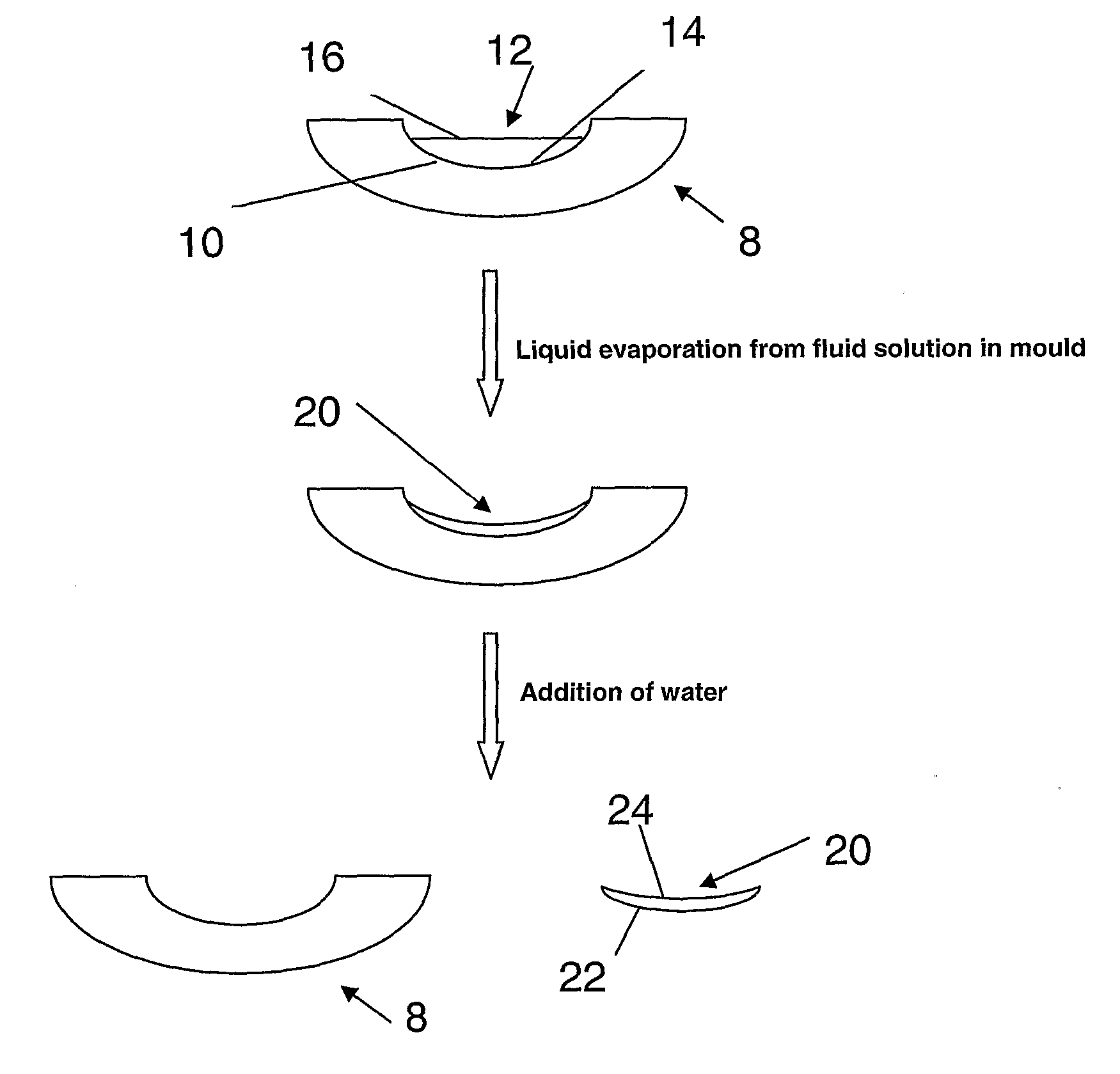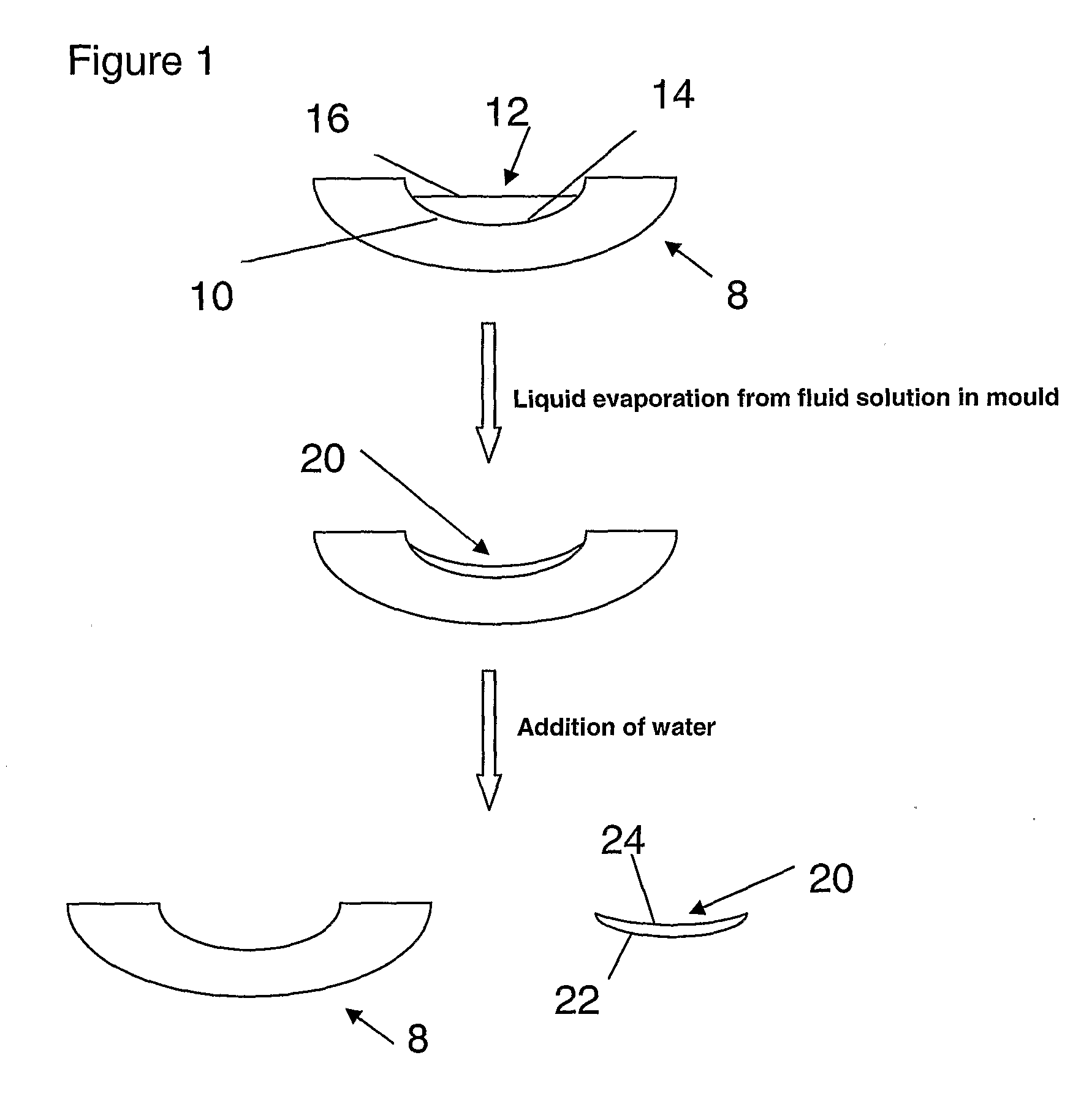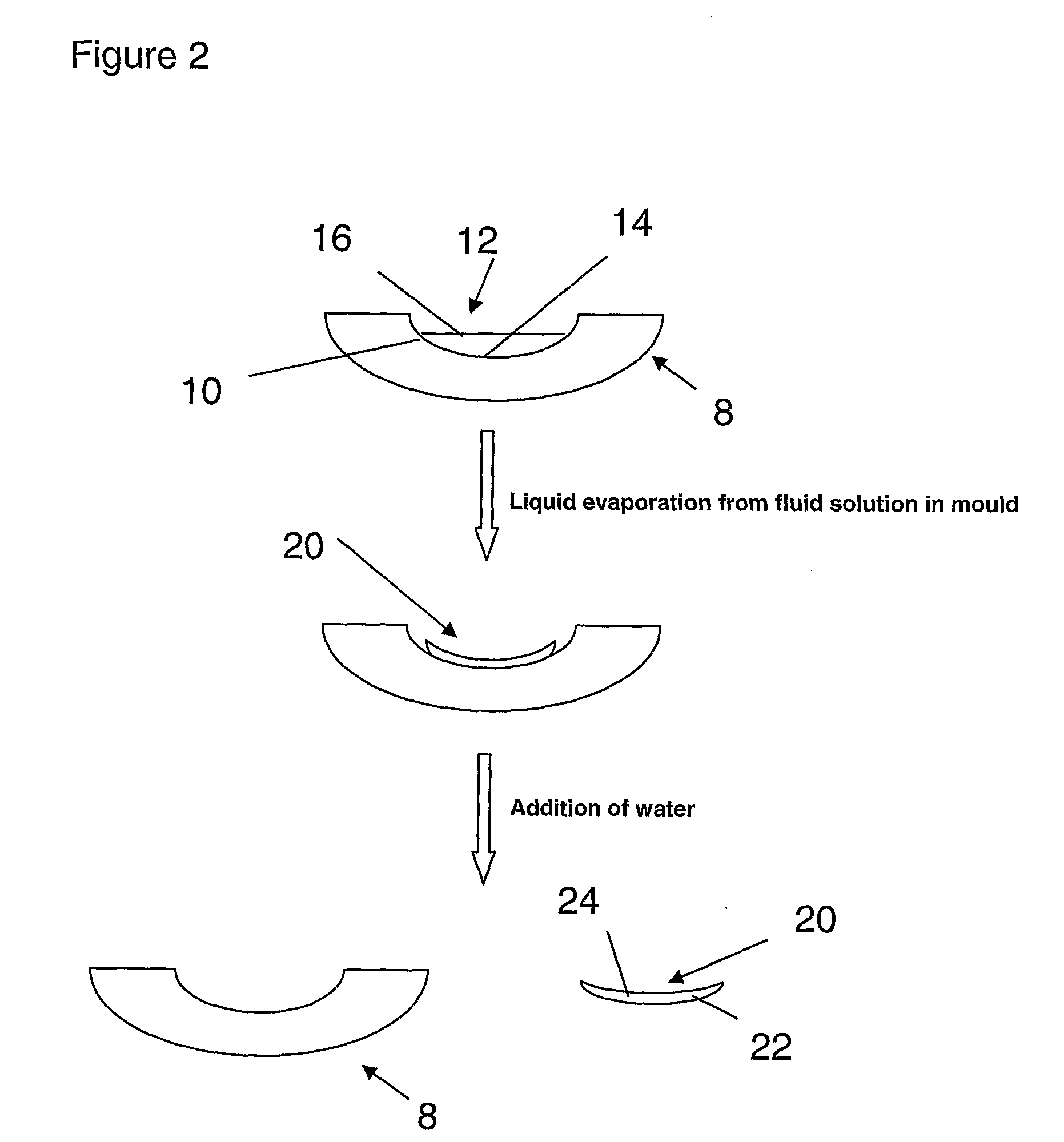Method of forming
- Summary
- Abstract
- Description
- Claims
- Application Information
AI Technical Summary
Benefits of technology
Problems solved by technology
Method used
Image
Examples
Embodiment Construction
[0226]A non-macrogelled polymer was prepared using the following method. Polypropylene glycol 425 (PPG 425) (27.1565 g) and anhydrous ferric chloride (0.0112 g) were weighed into a beaker that was placed in an oven at 95° C. The ferric chloride dissolved within a few minutes by the aid of stirring by a glass rod and 4,4′-methylenedianiline (DPDA) (0.3167 g) was added, thoroughly stirred and the beaker was replaced in the oven.
[0227]Then molten polyethylene glycol 3130 (PEG 3130) (10.00 g) was added to the same beaker, stirred and the beaker was replaced in the oven for 15 minutes. During this period the contents were occasionally stirred to ensure thorough mixing.
[0228]Finally Desmodur W (biscyclohexylmethane-4,4′-diisocyanate) (18.9327 g) was added while the contents of the beaker were being stirred and the beaker was replaced in the oven for few minutes where the contents were occasionally stirred. The contents of this beaker were then poured into preheated (to 95° C.) polypropyle...
PUM
| Property | Measurement | Unit |
|---|---|---|
| Temperature | aaaaa | aaaaa |
| Pressure | aaaaa | aaaaa |
| Hydrophilicity | aaaaa | aaaaa |
Abstract
Description
Claims
Application Information
 Login to View More
Login to View More - R&D
- Intellectual Property
- Life Sciences
- Materials
- Tech Scout
- Unparalleled Data Quality
- Higher Quality Content
- 60% Fewer Hallucinations
Browse by: Latest US Patents, China's latest patents, Technical Efficacy Thesaurus, Application Domain, Technology Topic, Popular Technical Reports.
© 2025 PatSnap. All rights reserved.Legal|Privacy policy|Modern Slavery Act Transparency Statement|Sitemap|About US| Contact US: help@patsnap.com



